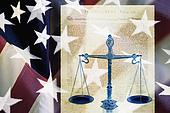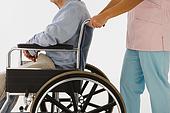| Robert Alan Saasto, Esq. | 41
Eagle Chase Woodbury, NY 11797 Tel: 631.223.1780 | Fax: 631.223.1701 |
Personal Injury | Medical Malpractice | Car Accidents | Construction Accidents | Slip and Fall | Work Injuries | Wills/Legal Documents
Defective Products
One of the marvels of the modern era has been the power of
technology to make our lives better. It seems as if every day a new product or
technology is invented which helps us do something faster, easier, better or
much more cheaply. But there can be a dark side to all of this technological
advancement. As our ability to make better products increases, so too does our
ability to injure ourselves from defects in these products. For example, auto
travel is probably much safer since the invention of air bags, but air bags can
also kill and maim.
The National Highway Traffic Safety Administration reports that since 1990, air bag deployment has killed 227 automobile passengers and drivers in low-severity crashes. In other words, air bags have killed people that would have otherwise lived in an accident without air bags.
In order to protect individuals from defective products and provide them with damages when they are injured, product liability laws provide remedies when a person is injured or property is damaged because of a defective product. Liability for a defective product can occur in many ways. The most common type of product liability action involves a defectively designed or manufactured product. In this type of case, a product may have been rushed to market and the engineer or designer may not have been given enough time to fully analyze the design of the product. As a result, the product did not function as it was intended and caused injury. Alternatively, the product may have been adequately designed or engineered, but there was a problem in the manufacturing facilities used to construct the product which caused it to be defective. In either case, the person injured by the defective product may have the right to recover under the applicable product liability law.
In the second type of product liability case, a product may be safe but the manufacturer failed to include appropriate instructions for the use of the product or warnings of possible hazards associated with the product. If a person is injured as a result of the manufacturer's failure to include an appropriate warning or instructions, the person may have a viable product liability claim.
The third type of product liability case involves inherently unsafe products. Certain products may be properly designed, manufactured and labeled but be so inherently dangerous in the hands of the consumer that they inevitably cause injuries. Although this type of product liability claim is relatively rare and hard to win, the products, in these cases, usually cause catastrophic injuries and give rise to huge judgments and settlements.
Because of the complexity of the modern design, manufacturing, and distribution system, a number of different businesses may be involved in the creation, distribution and sale of a defective product. As a result, there are a number of potentially responsible parties in a typical product liability action. Potentially responsible parties may include the manufacturer of component parts or the final assembling manufacturer, manufacturers of assembly line equipment, robots or other technology used in the manufacturing process, material suppliers, product designers and engineers, wholesalers and distributors, and retail stores and other final sellers.
In many instances, you may be entitled to money damages for injuries caused by a defective product, even in a case involving what may appear to you to be a minor injury. You can recover any medical expenses you have had to cover as a result of your injury, such as doctor and hospital bills, medications, therapy, home health care and all other related medical expenses, as well as any future medical expenses you reasonably expect to incur. You can also recover for the physical pain and suffering you have sustained, your out of pocket expenses, your mental and emotional anguish, your lost wages, benefits and other compensation, any loss of your future earning capacity, and the future diminishment of your enjoyment of life. Additionally, in some cases, if your spouse or child has been injured, you may be entitled to collect damages for the loss of pleasure or companionship you have experienced as a result of their injuries. And in certain extreme cases, where the wrongdoer's conduct is extreme and outrageous, you may be entitled to collect punitive damages to punish the wrongdoer and to prevent the misconduct from being repeated in the future.
Although the damages available in product liability cases can be substantial, the cases can be incredibly complex and present many roadblocks to a substantial recovery. As noted above, there are many potentially responsible parties in a typical product liability case and each such party will try to point the finger at someone else, thus making an already complicated case into an epic struggle. Additionally, the laws governing product liability actions are highly detailed and technical, vary from state to state, and can require proof under a number of different theories, including strict liability, negligence and breach of warranty. Moreover, in almost every product liability case, you'll need to assemble a team of expert witnesses-such as industrial designers, engineers, chemists, manufacturing experts, doctors, accountants-to identify which party was responsible for the defective product, what the defect was, and how the defect caused your injury.
Personal Injury | Medical Malpractice | Car Accidents | Construction Accidents | Slip and Fall | Work Injuries | Wills/Legal Documents



